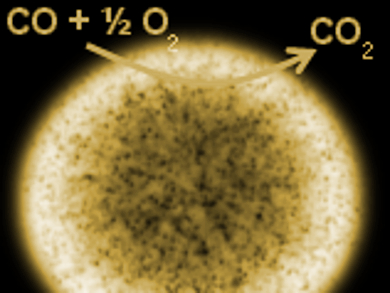Catalysis using gold has become a burgeoning field of investigation, given the large variety of useful organic transformations that can be promoted by nanoscale Au. Mesoporous silica materials are regarded as convenient supports for gold nanoparticles because they offer high surface areas and can help prevent metal leaching and aggregation. Nevertheless, they are often affected by mass-transfer limitations even at moderate metal loadings of 2-4 wt.%.
Pradip B. Sarawade, University of Mumbai, India, Valerio D’Elia, Jean-Marie Basset, King Abdullah University of Science and Technology, Thuwal, Saudi Arabia, and colleagues have generated gold nanoparticles of different sizes using fibrous silica nanospheres (KCC-1) as a mesoporous support. The nanoparticles were synthesized by reaction of the support fibres with AuCl4 followed by reduction with NaBH4 or CO. The researchers observed extremely well-dispersed, homogeneous, and narrowly-distributed Au nanoparticles with sizes ranging from 1–2 nm or 3–5 nm, respectively, on the support fibers.
In spite of the high metal loading of 10.4 wt.% Au, the gold nanoparticles of 3–5 nm size displayed catalytic activity in the benchmark reaction of CO oxidation and excellent thermal stability towards sintering. There is a high potential for the application of these high-loading and highly accessible Au nanoparticles in catalysis.
- Gold Nanoparticles Supported on Fibrous Silica Nanospheres (KCC-1) as Efficient Heterogeneous Catalyst for CO Oxidation,
Ziyauddin S. Qureshi, Pradip B. Sarawade, Irshad Hussain, Haibo Zhu, Hind Al-Johani, Dalaver H. Anjum, Mohamed Nejib Hedhili, Niladri Maity, Valerio D’Elia, and Jean-Marie Basset,
ChemCatChem 2016.
DOI: 10.1002/cctc.201600106




